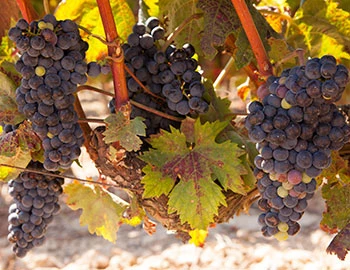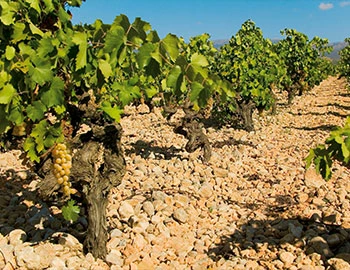Viña El Pisón 2020
Álava, Viñedos Lacalle y Laorden (Artadi), 750 ml

| Grape variety: | Tempranillo |
| Producer: | Viñedos Lacalle y Laorden |
| Origin: | Spain / Rioja |
| Other vintages: |
Description
El Pisón is a single vineyard in the province of Álava in Rioja and is located in the town of Laguardia. The Tempranillo vines were planted in 1945 and are spread over 2.4 hectares. Juan López de Lacalle has succeeded in producing a first-class wine with El Pisón, which brings out the delicate balance between all the natural factors that make up this unique environment. The wine is accompanied by subtle minerality, delicate fruit – reminiscent of wild berries and liquorice – as well as complex and delicate spicy nuances and soft tannins. A wine of natural elegance – made for eternity.
Attributes
| Origin: | Spain / Rioja |
| Grape variety: | Tempranillo |
| Label: | Certified organic or biodynamic wine |
| Ripening potential: | 3 to 20 years |
| Drinking temperature: | 16 to 18 °C |
| Food Pairing: | Châteaubriand, Filet Wellington, Roasted lamb gigot, Bistecca fiorentina, T-Bone steak |
| Vinification: | fermentation in wooden barrel, fermentation at low temperatures, long must fermentation |
| Harvest: | hand-picking, strict selection, in small boxes |
| Maturation: | in partly new and used barriques/ Pièces, bâtonnage |
| Bottling: | no filtration |
| Maturation duration: | 9 months |
| Volume: | 14.5 % |
| Note: | Contains sulphites |
Viñedos Lacalle y Laorden
In 2015 the two families of Zapiain and Lopez de Lacalle launched the Izar-Leku Mahastiak project (today Grupo Artadi) in Zarautz/Basque Country, with the aim of producing a table wine as well as a sparkling wine with Txakoli as the base wine. Today this sparkling wine is part of the "Viñedos Lacalle y Laorden" company - just like the premium single-vineyard wine "Viña El Pisón", though this wine comes from the Álava/Rioja region.
Txakoli is a traditional white wine from Spain's Basque Country, made from the native grape varieties of Hondarribi Zuri (white grape, proportion approx. 90%) and Hondarribi Beltza (red grape, proportion approx. 10%), which has developed from a wine that was traditionally enjoyed in local taverns or at home in the family circle into a wine with its own "DO" and strong reputation.

Tempranillo
Iberian Native
The Tempranillo is the emblem of Spain. With its juicy cherry fruit, crisp tannins, and its notes of leather and spices, it gives the Rioja its face. In the Ribera del Duero, it is known as Tinta del país. Here it turns out focused and muscular. As it has inhabited the Iberian Peninsula for centuries, it is known under countless synonyms. Across the border in Portugal, it is called Tinta Roriz, and lends colour and body to port wine. It also plays an important role in the booming wine scene of the Douro Valley. The Tempranillo owes its name to its early maturity – "temprano" in Spanish means "early". Tip: do it like they do in Spain and enjoy it with lamb.

Rioja
Rioja: A legend in upheaval
It is the flagship of the Spanish wine industry: the Rioja region, with its elegant, yet storable wines, most of which are dominated by the Tempranillo, has decisively influenced the image of Spanish wine. Above all, the Reservas and Gran Reservas, aged for years in barrels, enjoy a magical reputation. For about 20 years, the Rioja houses have created a sensation with modern-designed, fruity wines, which are marked more by their terroir than their aging processes.

Spain
Spain – Variety and perfection
“Somewhere in la Mancha, in a place whose name I do not care to remember...,” begins Don Quixote's odyssey.
The most famous part is definitely when Don Quixote thinks windmills are his enemy and wants to fight them – until they nearly kill him. It’s possible there was a bit too much of the La Mancha wine at play. Spanish vines fight for their survival in rugged landscapes, battling fierce drought and rough soils. But they fight well.



